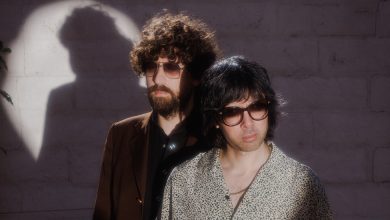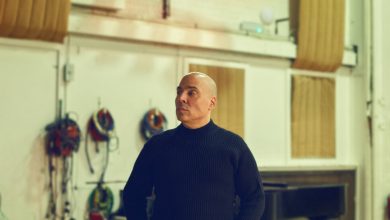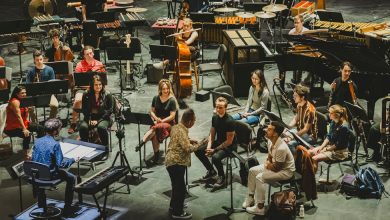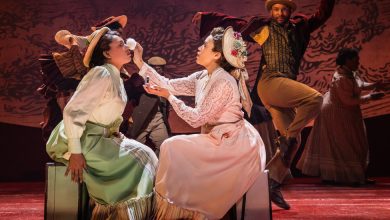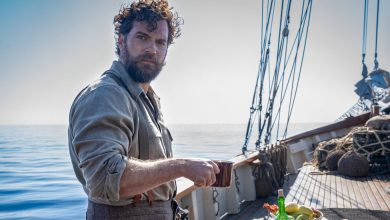James Wong Howe: A Gutsy Cinematographer Finally Gets His Due

The Chinese American cinematographer James Wong Howe was an industrious, peripatetic youngster. In modern parlance, he was a hustler, but so was everyone in the early, exploratory years of cinema, when the fledgling film industry churned out dozens of titles every week. During the 1910s, the silent film directors who won acclaim — like D.W. Griffith and Cecil B. DeMille — seemed to rise through shrewd business acumen, false confidence and good luck.
Wong Howe had all of those things, but he was gutsier — he had to be. It was clear in the boundless, reckless innovation of his work; his reputation as a supreme perfectionist; and his success and respected status in an industry that saw virtually no place for artists of Asian descent. James Wong Howe was defiance personified.
His decades-long career, which spanned the silent era, Hollywood’s golden age and the New Hollywood renaissance of the 1960s and ’70s, was emblematic of a creative spirit that persisted despite changing fashions, industry upheavals and discriminatory practices. He revolutionized the way films communicated visually, developing new techniques that could convey feelings without the need for words or even performers — like the expressionistic use of wide-angle and fish-eye lenses in John Frankenheimer’s body-swapping science-fiction drama, “Seconds” (1966); or one of the earliest aerial shots in the final moments of Joshua Logan’s Technicolor romantic comedy “Picnic” (1955).
These and other examples of Wong Howe’s photographic prowess can be seen in a continuing series dedicated to his work that runs through June 26 at the Museum of the Moving Image in Queens.
James Wong Howe was born Wong Tung Jim in Kwantung, China, in 1899. In the early 1900s, he was whisked away to Pasco, Wash., by his entrepreneurial father. There, he experienced racism, learned to box and began tinkering with cameras before his father’s death, in 1914, set off a period of drifting. Not unlike Charlie Chaplin’s classic character the Tramp, Wong Howe was a game outsider stumbling from misadventure to misadventure. He went to Oregon, San Francisco, and then Los Angeles, where the 18-year-old Jimmie Howe eventually finagled a job on the janitorial staff of Lasky Studios.
DeMille took a liking to Jimmie; he was amused by the young man’s floral shirts, the contrast between his small stature and the outsize cigars he smoked on set. Wong Howe was not passive; he seemed to take the matter of his skin color as a challenge. In his free time, he began familiarizing himself with the studio’s equipment and practiced taking pictures with a still camera. Soon, he was promoted to assistant cameraman.
No one at the time was what we might today consider a bona fide camera expert. People learned on the job, improvised and experimented with the new technologies, so the crew members who distinguished themselves were the ones who found creative solutions to the problems that arose on set. This was Wong Howe’s forte and the source of his first big break. The actress Mary Miles Minter, impressed by Wong Howe’s still portraits of her, insisted he shoot her next film. He had devised a solution that could keep her blue eyes from turning white on camera, a problem caused by the blue-sensitive orthochromatic film used at the time. From then on, his reputation as a formidable cameraman was assured.
Wong Howe wasn’t the only Asian artist hanging out on the studio back lots. There was the Japanese-born actor Sessue Hayakawa. Hollywood’s onscreen enforcement of anti-miscegenation laws restricted him to playing forbidden-lover roles or sadistic Svengali types, but his popularity among white women viewers made him a bankable presence. Then there was the Chinese American actress Anna May Wong, a go-to supporting performer as the film industry began to mount bigger, more spectacular productions in “exotic” settings. Wong Howe, in fact, would shoot her in one of her first major roles, as the Indigenous princess Tiger Lily in Herbert Brenon’s “Peter Pan.”
But renewed anti-Asian sentiment and the Production Code of the 1930s, which put a chokehold on the depiction of interracial relationships, further diminished the industry’s willingness to work with performers of Asian descent. Wong Howe initially floundered during this period, but his work — particularly his penchant for dramatic, high-contrast lighting, which earned him the nickname “Low-key Howe” — spoke for itself. His split-screen shot allows Ronald Colman’s Major Rassendyll to speak directly to his doppelgänger in John Cromwell’s “The Prisoner of Zenda,” (1937), and the fight scenes he filmed in Busby Berkeley’s “They Made Me a Criminal” (1939) are so visceral you can almost feel the boxing gloves jabbing.
Though he was adored by the press — what a novelty that an Asian man could be so talented and so full of personality — and respected by his collaborators, Wong Howe was often scorned by the white crew members under his command. He dealt with laws and prejudices that relegated him to second-class citizenship all of his life. During World War II, he wore a button that read “I am Chinese” to ward off harassment should anyone think he was Japanese. Though he had been living in the United States for nearly four decades, the Chinese Exclusion Act of 1882 prohibited him from gaining citizenship; without it, he was forced to turn down exciting creative opportunities, like joining John Ford’s wartime documentary crew.
Most devastating perhaps was his marriage to the novelist Sanora Babb; the couple tied the knot in Paris in 1937, but California’s anti-miscegenation laws and the studios’ morality clause prevented them from going public until decades later. For his suspected association with Hollywood Communists, he was put on the “graylist” by Senator Joseph McCarthy’s House Un-American Activities Committee; Wong Howe kept out of politics for the most part, but it didn’t help that China had become a Communist state.
Still, he carried on during the precarious ’40s, working with Fritz Lang on the provocative war thriller “Hangmen Also Die!,” and capturing Ida Lupino in all her shades of ambition and vulnerability in Vincent Sherman’s pitch-black melodrama “The Hard Way.”
Wong Howe’s images are sublime, his expressive interplay of light and shadow summoning moral conflicts out of thin air. He re-envisioned New York with a bleak, otherworldly flair with “Sweet Smell of Success,” Alexander Mackendrick’s 1957 drama about a vicious newspaperman, a work that many consider to be Wong Howe’s chef d’oeuvre. He coated interior-set walls in oil to give them a surreal shimmer, and used long-focus lenses to make buildings look clustered together, emphasizing a sense of claustrophobic delirium.
There are few individuals whose work so comparably ushered in cinema’s transition from mere dime-ticket spectacle to art form. Still, Wong Howe was hungry. Since the 1920s, he had wanted to direct, and though he was given the opportunity in the form of commissioned documentaries and “B” movies, his real ambitions were too often denied. There was a project about rickshaw pullers in China, as well as a script he wrote with Babb about San Francisco’s Chinatown, but both ideas were ultimately dropped for lack of financing. If you can catch only one screening at the Museum of the Moving Image, make it Wong Howe’s sole directorial feature, “Go, Man, Go!” (1954), which stars a fresh-faced Sidney Poitier and Ruby Dee in a drama about the Harlem Globetrotters. It is a bare-bones production, but the grit and spirit of something even greater was just beneath the surface, like Wong Howe himself.
Wong Howe didn’t deny his Chinese roots. For a time, he ran a popular Chinese eatery that was frequented by Marlene Dietrich, Mickey Rooney and Tyrone Power. And in his final years, he took to wearing traditional Chinese clothes. In Todd Rainsberger’s 1981 study of the cinematographer, it becomes clear that Wong Howe, who died in 1976, longed to create a more expansive portrait of Americanness, one that felt true to him, if not his employers. He was one of the great American cinematographers and a two-time Oscar winner, but he wanted more because he knew he deserved it. Such was his defiance.
“How It’s Done: The Cinema of James Wong Howe” runs through June 26 at the Museum of the Moving Image in Astoria, Queens. For more information, go to movingimage.us.
